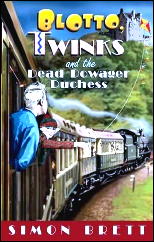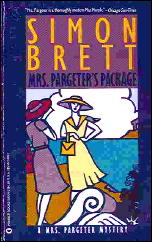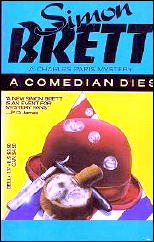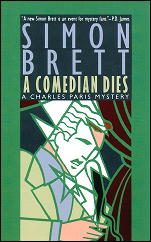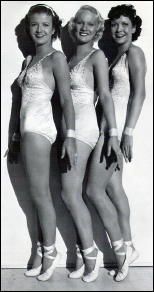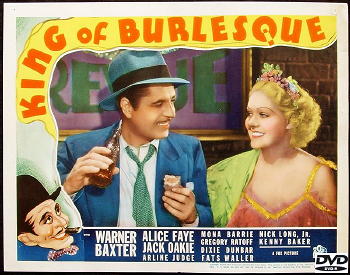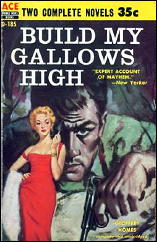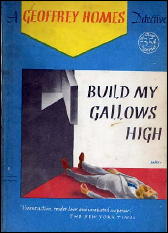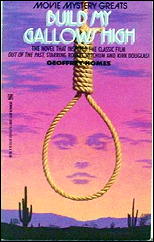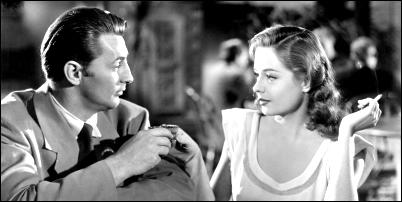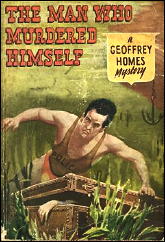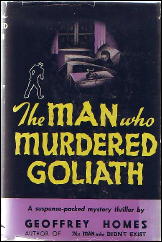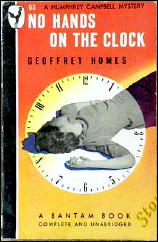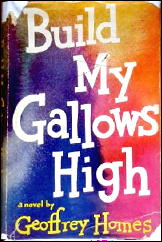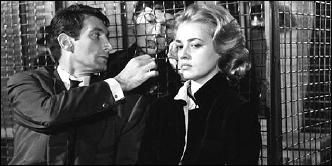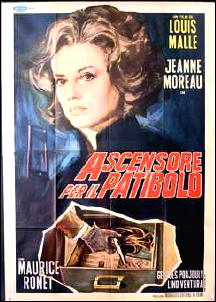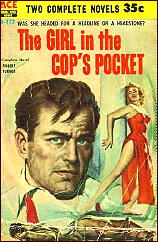Reviewed by DAVID L. VINEYARD:
SIMON BRETT – Blotto, Twinks and the Ex-King’s Daughter. Felony & Mayhem, softcover, February 2011. British edition: Constable, hardcover, May 2009.
The name Simon Brett should be no stranger to anyone on these pages. His Charles Paris series about a bibulous actor is held in the highest esteem by lovers of humorous well written mysteries, and for the past decade he has been penning less humorous but well received British cozies set in Fethering, a small English town out of Miss Marple by way of The Last of the Summer Wine.
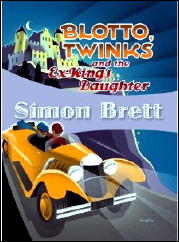
Blotto, Twinks and the Ex King’s Daughter is yet another venue for Mr. Brett, and one that shows a different side both to his humor and English village life. Indeed, his new series lies somewhere in that vague country inhabited by P.G. Wodehouse’s Jeeves and Wooster, Dornford Yate’s Berry and Company, some of the more playful Agatha Christie’s, the early Albert Campion, the more extravagant adventures of Michael Innes Sir John Appleby, and Leonard Wibberly’s Duchy of Grand Fenwick.
The time is somewhere between the two world wars in an England of stately homes, dizzy aristocrats, loyal retainers, dastardly villains, and vintage automobiles.
The setting is Tawcester Towers, where the Dowager Duchess of Tawcester (the Duke, her son — known as Loofah and Rupert the Dull, descendant of Rupert the Fiend and Black Rupert — having passed on five years earlier) is entertaining the exiled king of Mittleuropa, Sigismund, when her youngest son, the Right Honorable Devereaux Lyminster, known as Blotto (and with good reason) announces he’s found a body in the library, one Captain Schtoltz.
“It’s frightfully awkward, Mater, but there’s a dead body in the library.”
In very short order Chief Inspector Trumbull and Sergeant Knatchbull arrive, none too impressed by the body or the Duchess and her royal guest, and then to add to the trouble the Princess Ethelinde is kidnapped.
Well, naturally Blotto can’t allow that kind of thing to happen in Tawcester Towers without doing something, but considering his limited capacity in the brains department, it is just as well his beautiful sister Lady Honoria, known as Twinks, has a first rate mind and nose for murder (“– what a brainbox that girl had”).
And the chase is on — in vintage open automobiles of course — and with Grimshaw, Blotto’s valet, in tow (a gentleman never travels without his valet) all the way to Mittleuropa, where they stumble on intrigue supplied by nearby Transcarpathia, ruled by King Anatol and Princess Ethlinde’s betrothed, Prince Fritz-Ludwig among others.
Before you can say Zenda…, Blotto and Twinks (Grimshaw in tow) are on the trail of the murderer in the capital Zling and over the battlements of the Castle Berkenziepenkatzen … assuming you actually can say any of that.
Of course Blotto will rescue the Princess and nobly renounce said princess in true Rassendyl style (he has to get out of it somehow) while Twinks will hunt down the kidnapper and murderer displaying both brains and spunk, but it is all a near run thing — especially for Blotto, who might have ended up king of Mittleuropa, or in the arms of the dangerously attractive Svetlana Lubachev (“as a femme fatale she did have some standards”). All before Blotto confronts the killer back in England at jolly old Tawcester Towers in Rupert the Antisocial’s billiard room.
This is a very funny book, inventively, and splendidly, silly, bright, clever, and outrageous. There isn’t a serious bone in its head. I’m not really sure a mere reviewer can convey the exact spirit and voice of the book, but if you want to escape from reality into a world of smiles, chuckles, and undignified guffaws, this is your chance. Wodehousian, yes, but with a few left turns reminiscent of the Marx Brothers or Mel Brooks, and all bundled up as an attractive new series we can only hope to see more of.
If you want a few laughs you’d be blotto not to read it.
The Blotto & Twinks series —
1. Blotto, Twinks, and the Ex-King’s Daughter (2009)
2. Blotto, Twinks and the Dead Dowager Duchess (2009)
3. Blotto, Twinks and the Rodents of the Riviera (2011)

